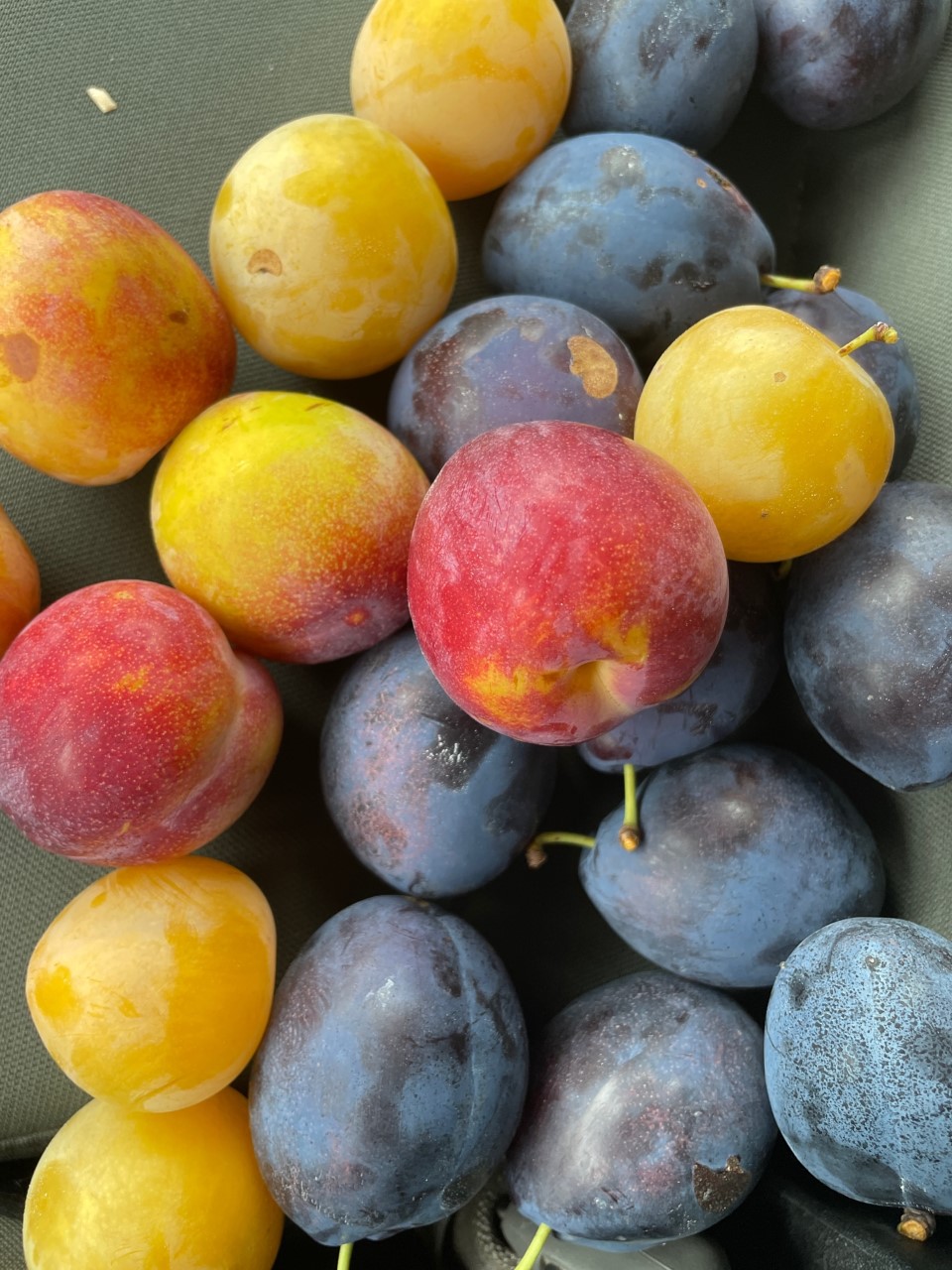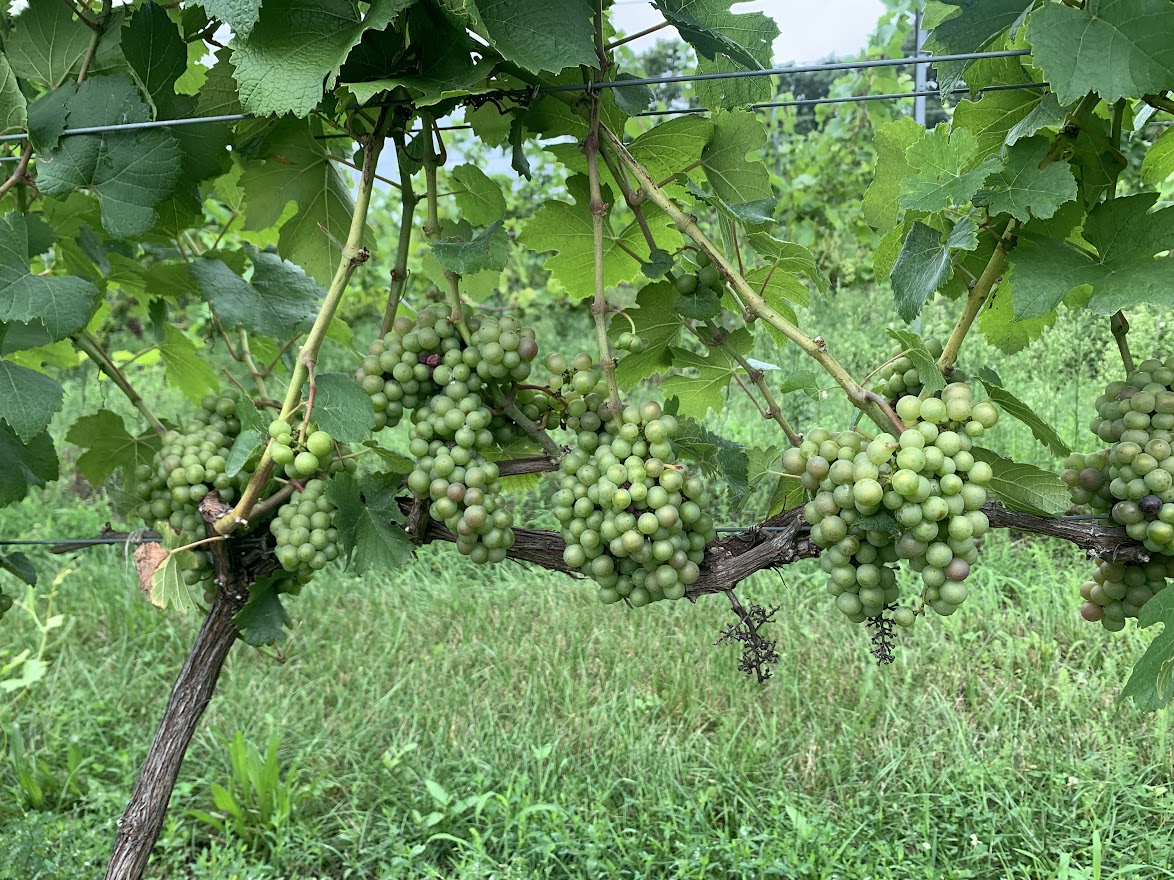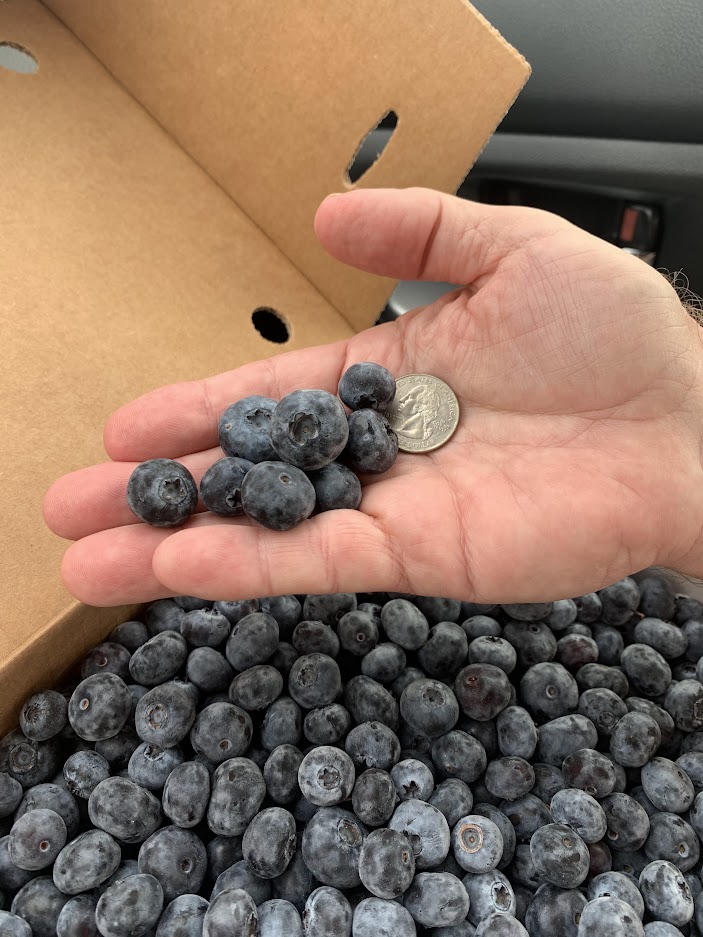Southwest Michigan fruit update – August 9, 2022
Peach harvest is in full swing. Apple harvest is beginning.

Weather
Last week was warm and humid. Most days had high temperatures in the mid- to upper 80s, lows near 70. Thunderstorms passed through the region midweek and Thursday with most stations receiving about a half-inch of rain. Another round of thunderstorms on Sunday followed by rain on Monday accompanied a cold front, bringing an inch and a half of rain and dropping temperatures by 10 degrees.
This week will be cooler. Most of the week will see high temperatures in the upper 70s and lows in the 50s. The only, slight, chance of rain comes over the weekend.
With the seasonal week last week, we picked up an average number of degree days, 196 growing degree days (GDD) base 42, 138 GDD base 50.
|
Southwest Michigan GDD summary from March 1 through August 8, 2022 |
|||
|
Station |
GDD 42 F |
GDD 45 F |
GDD 50 F |
|
Benton Harbor (SWMREC) |
2943 |
2575 |
1926 |
|
Lawton (Lawton) |
|
2542 |
1973 |
|
Fennville (TNRC) |
|
2365 |
1807 |
|
Average for the SW region |
2878.4 |
2512.7 |
1946.4 |
|
Average last week |
2644 |
2300 |
1768 |
Tree fruit
Recent rains have stimulated new terminal branch growth on trees and helped with sizing fruit. Japanese beetle populations are still relatively high but holding steady. Brown marmorated stink bugs of the summer generation are still early stage immature juvenile beetles incapable of flight. Spotted wing drosophila numbers are just now starting to climb.
Peach and nectarine harvest of Red Haven, Jon Boy, PF 15A is underway. Brown rot problems are increasing in some orchards. Phomopsis blight is causing branch dieback and gumming. This disease can be identified by one year old grey colored shoots with black pimples.
In cherries, management of cherry leaf spot should continue until at least mid-August so that trees overwinter in good shape.
In plums, Castleton and Vanier are being harvested in central Berrien County. Crop loads are relatively heavy in some locations requiring additional thinning. The current disease problem is brown rot.

Apple harvest of Williams Pride and Pristine is underway. Preharvest treatments for harvest delay, stop drop, and shelf life are summarized in an article by MSUE apple specialist Anna Wallis. Fire blight continues to be a problem in young orchards with susceptible varieties and fertile soils pushing growth. Multiple applications of high rates of Apogee and perhaps copper sprays are about the only partial remedy at this point.
Timing sprays for the diseases sooty blotch and fly speck is based on the number of hours of wetting since the last spray, which can be obtained from the Enviroweather sooty blotch and flyspeck model. However, spacing out fungicide applications in the mid summer due to lower risk of these diseases can increase the risk for establishment of black rot infections on fruit.
Apple maggot flies have been caught for a month in the Trevor Nichols trapline. Monitoring for this pest should be done with red spheres at this time. Codling moth and oriental fruit moth are the primary insect concerns for most orchards. Codling moth fruit entries tend to be on the side of the apple whereas oriental fruit moth tends to enter at the calyx or stem end of the fruit.
Small fruit
Grape veraison has begun in several hybrid varieties including Marquette, Geneva Red, Noiret and Vanessa. Disease management of phomopsis, black rot, downy and powdery mildews are the primary focus currently. The heavy dews we are experiencing means it is important to maintain protection against downy mildew. Powdery mildew has been troublesome this year at a few sites, likely due to the hot and humid but dry June speeding up development early this year.
Grape berry moth third generation should begin this week. This is the timing for the next major spray window for this pest. Don’t forget to maintain coverage in a couple weeks. Failures in continued coverage for the third generation caused problems last year. Choose your products wisely. Many pyrethroids are not very effective in high temperature times of year.

Blueberry mid-season varieties are wrapping up in most areas. Disease focus should continue to be on early fruit rot management. Spotted wing Drosophila (SWD) populations have increased again over the last week, likely due to the rain and cooler temperatures. The numbers are continuing to rise. Larvae are now beginning to be found in ripe fruit, especially in unmaintained blocks. Make sure and sign up for the blueberry field day on Aug. 24.

Bramble harvest continues. Fall bearing and everbearing raspberry and blackberries are beginning to color. Maintain fungicide programs to protect from fruit rots and monitor for spotted wing drosophila so you can stay ahead of the expected population increase coming soon.
Cranberries are beginning to turn color.
Upcoming meetings
The Blueberry Field Day is Aug. 24 at the Trevor Nichols Research Center in Fennville, Michigan. Register here.
Related articles
- 2022 Blueberry Field Day
- 2022 Fruit insecticide registration update
- Southwest Michigan fruit update – July 26, 2022
- Michigan grape scouting report – July 27, 2022
This work is supported by the Crop Protection and Pest Management Program [grant no 2021-70006-35450] from the USDA National Institute of Food and Agriculture.



 Print
Print Email
Email
